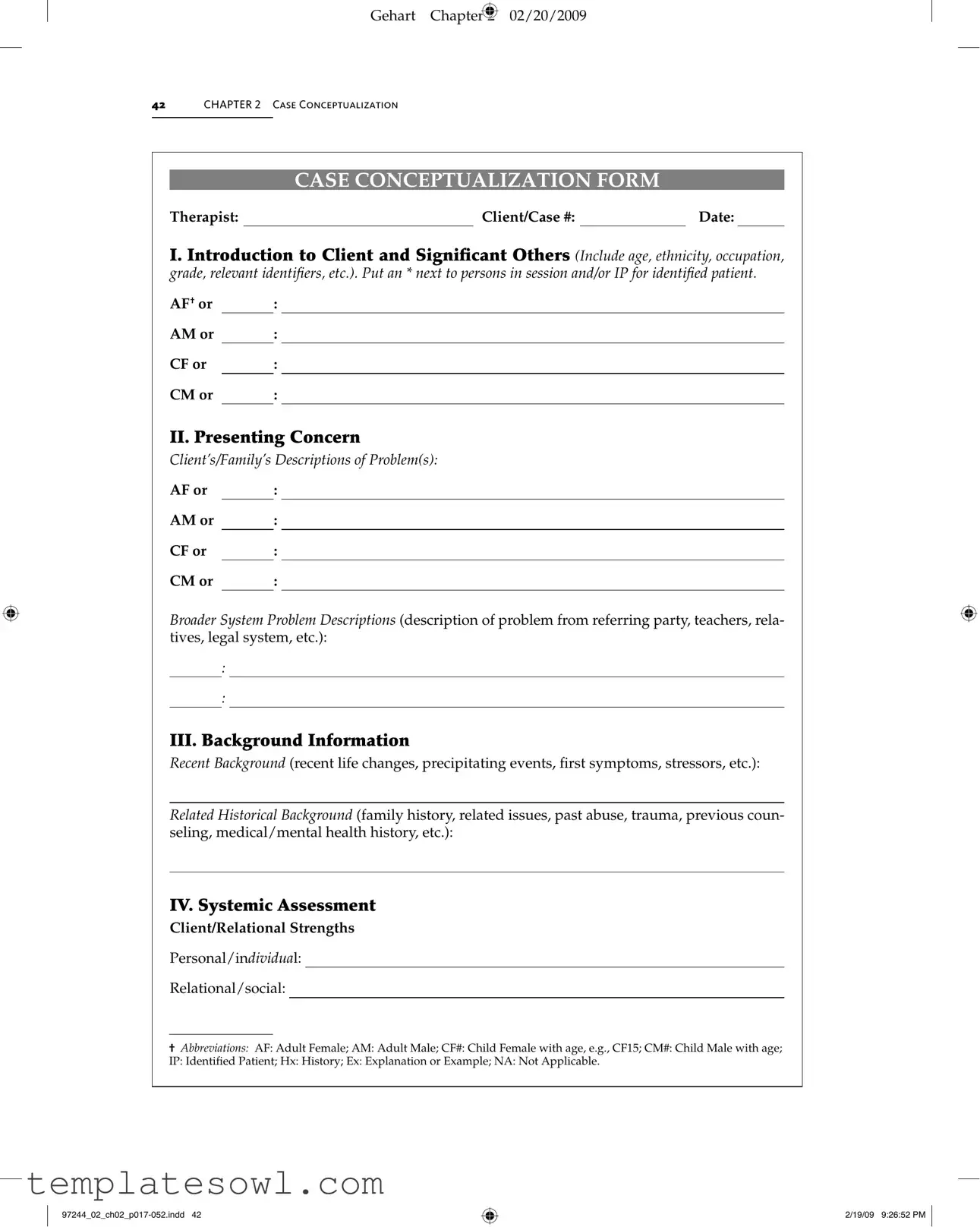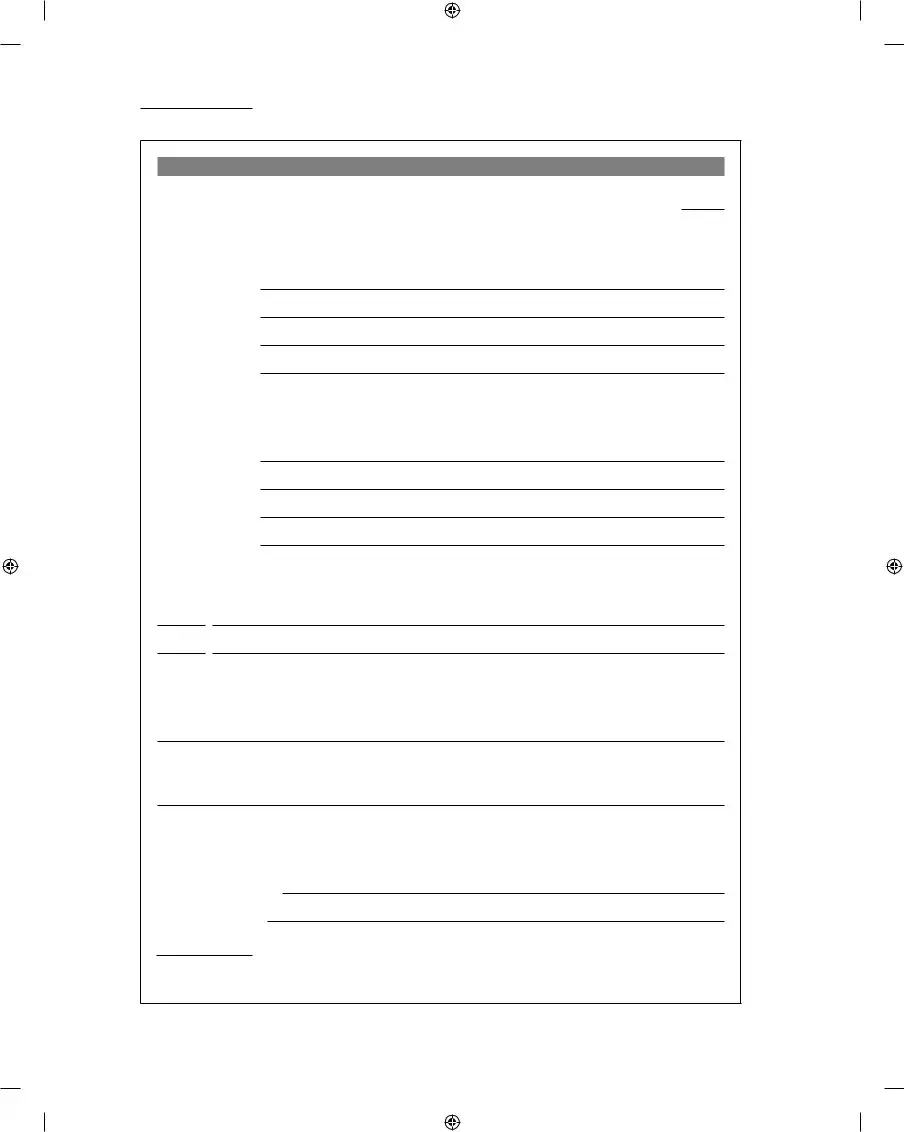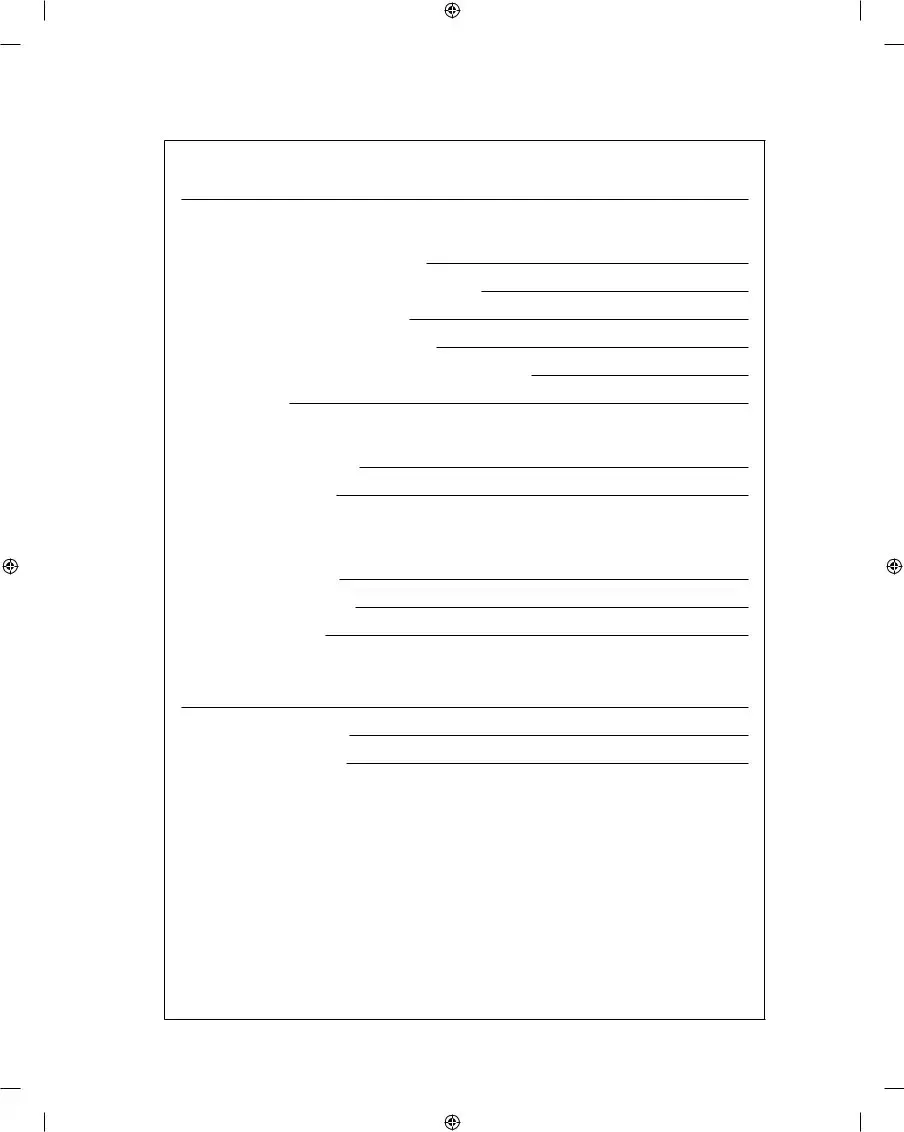What is the purpose of the Case Conceptualization form?
The Case Conceptualization form serves as a structured tool for therapists to gather comprehensive information about a client and their circumstances. It helps in identifying the client's concerns and situating them within a broader systemic context. This process aids in formulating treatment plans that are tailored to the unique needs of each individual or family.
Who should complete the Case Conceptualization form?
The therapist, counselor, or mental health professional involved in the client’s treatment should complete the form. It is designed for use during or after the initial assessment phase, ensuring that the therapist captures all relevant information in a systematic way.
What types of information are included in the introduction section?
The introduction section requires details about the client including age, ethnicity, occupation, and any significant others that may impact the case. This section sets the foundation for understanding the client's background and context.
How are presenting concerns documented in the form?
Presenting concerns are documented through descriptions provided by the client and their family. This captures their perspective on the problems faced. Additionally, information from external sources such as teachers or relatives may also be included, offering a holistic view of the issue.
What is meant by "systemic assessment" in the form?
The systemic assessment examines the client’s strengths, interaction patterns within the family, and relationships among family members. This analysis enables the therapist to identify dynamics that may contribute to the presenting concerns.
Why is it important to include a genogram in the Case Conceptualization?
A genogram visually represents family relationships and history, including ages, occupations, and medical conditions. This detailed illustration helps therapists understand patterns, dynamics, and potential areas of concern that may influence the client's current situation.
What do "areas of agreement" and "areas of disagreement" refer to in the context of client perspectives?
Areas of agreement reflect points within the assessment that the client acknowledges as accurate or relevant. Conversely, areas of disagreement highlight aspects the client challenges. Understanding these perspectives is crucial for fostering a collaborative therapeutic relationship.
How can past solutions and unique outcomes inform current treatment?
Documenting past solutions and unique outcomes provides insights into what has or hasn’t worked for the client previously. This knowledge can guide current therapeutic strategies, helping avoid ineffective approaches while building on successful tactics.
What role does cultural context play in the Case Conceptualization?
Cultural context is essential in shaping the client's experiences and perceptions. The form prompts the inclusion of various cultural factors, such as gender, socioeconomic status, and ethnicity, allowing for a more nuanced understanding of the problems presented.
How does the Case Conceptualization form contribute to the treatment plan?
Once completed, the Case Conceptualization form guides the development of a targeted treatment plan. It assists the therapist in identifying specific goals, strategies, and interventions that align with the client's unique needs and circumstances.





